Plants are my favorite subject, especially native ones. At this season blossoms are rare, but I thought it might be pleasant to be reminded of what we have to look forward to next year. These are not necessarily my favorite flowers, nor the most common ones. Rather these are my favorite photos of wildflowers. Some of them were part of an exhibit I did at the library several years ago, but many are more recent.
To see my more general guide to BI wildflowers take a look at my guide on Google Photos.
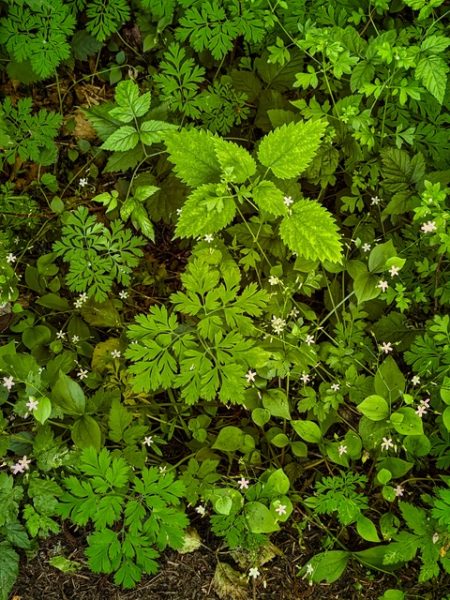
One of my favorite walks to explore in early spring is the Blakely Harbor to Fort Ward trail. Siberian miner’s lettuce tiny blossoms with their distinctive pink stripes [Claytonia sibirica, Pink purslane, Candy flower] are surrounded here by delicate bleeding heart leaves [Dicentra formosa] and others.
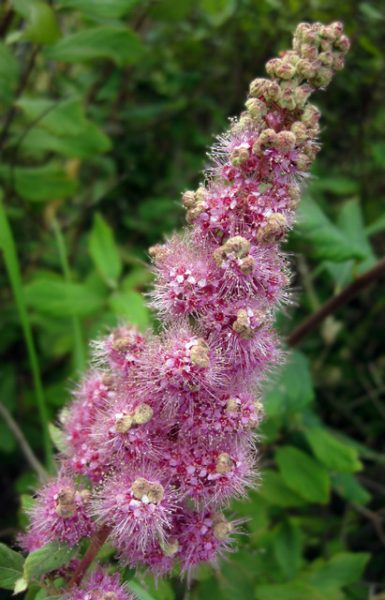
In contrast the bold spears of Spiraea douglasii appear along roadsides in midsummer. Sometimes mistaken for fireweed when viewed from a distance, their complex structure rewards a closer look.
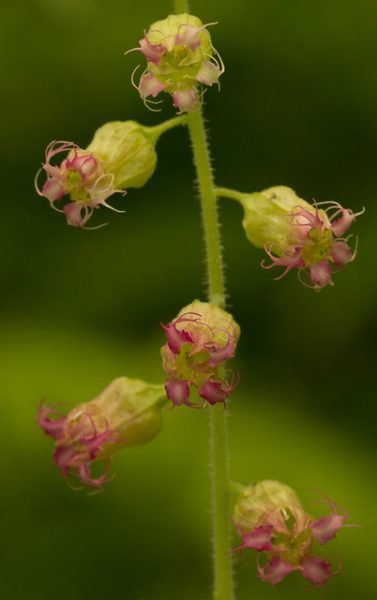
Another common roadside blossom is Tellima grandiflora whose Latin name is misleading: the flowers are tiny, and inconspicuous until they turn pink. Viewed close-up you can clearly see the fringed cups that give this plant its common name. The leaves are also handsome, and it makes a fine garden plant except that deer love to nibble off the flower stems.
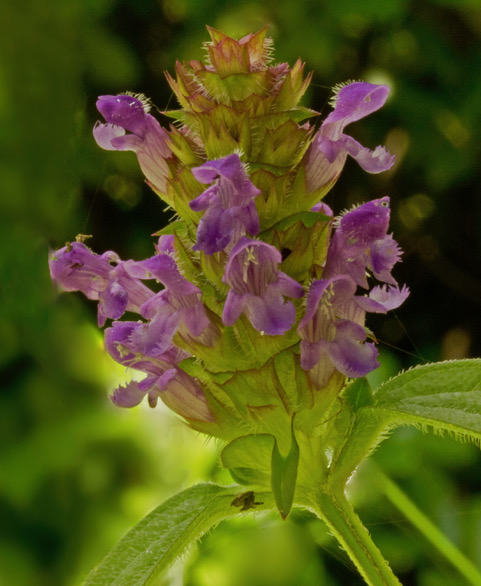
The common names of Prunella vulgaris—“heal-all,” “allheal,” and “self-heal”—reflect its ancient reputation in traditional herbal medicine, which made wild claims for it as a treatment for a huge variety of conditions. Scientific support for these claims is extremely scanty.
It’s usually fairly inconspicuous but in some settings it can grow quite tall. It is a common pest in lawns and is most easily extracted using a step-on weeder. But before I take it out I sometimes like to examine the tiny orchid-like blossoms. They are lovely.
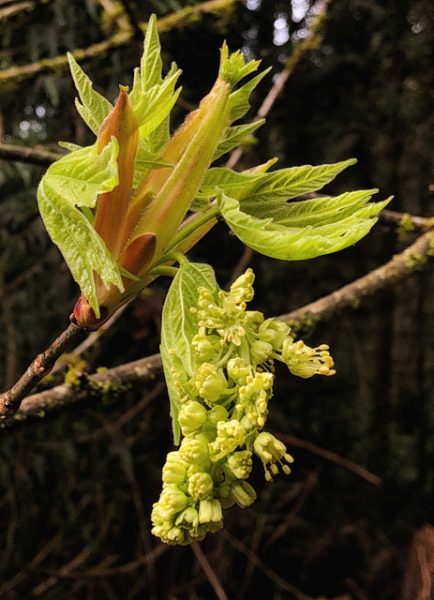
This large tree [Acer macrophyllum] is common all over the Island, with its enormous leaves and delicately winged seeds putting on a show that can lead to its delicate flowers being overlooked. As moderate allergens, it’s fortunate that their blooms are open only for a short period. On the Hilltop meadow I was struck by this insect-like sculpture created by infant leaves emerging from the bud with a swag of blossoms hanging below.
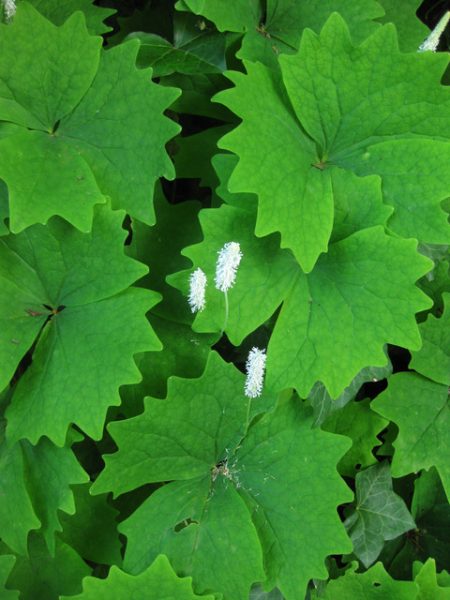
Achlys triphylla, also known as deer-foot, used to be called “sweet after death” because the dried leaves were used by native peoples and pioneers to perfume their dwellings. The stems of tiny blossoms briefly rise up separate from the larger stems that hold the much longer-lasting leaves. Look for them in the Grand Forest in spring.
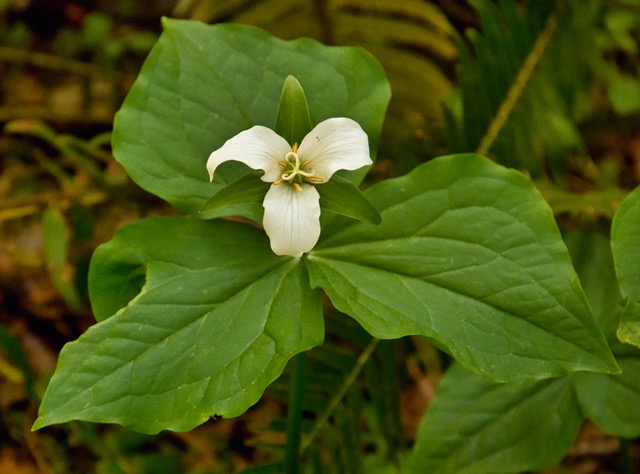
Trillium ovatum is our regional member of the vast trillium family, and definitely the star among woodland spring blossoms. I’ve taken many pictures of them, but I chose this one because of its delicately scalloped petals and intriguingly shaped six stamens and three stigmas.
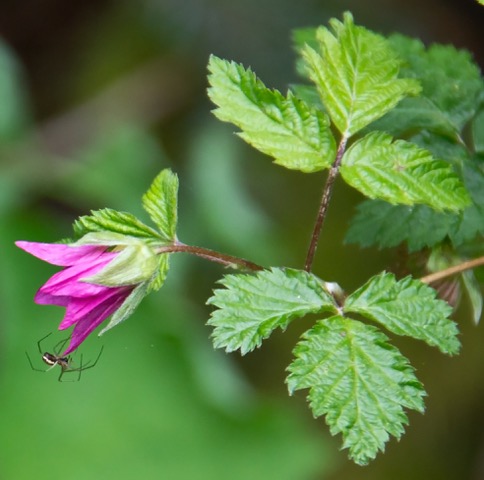
Rubus spectabilis has berries of an orangey-salmon color, but some of them are a deep red. I find the pink flowers difficult to photograph well, but I was taken by the little spider decorating this blossom.
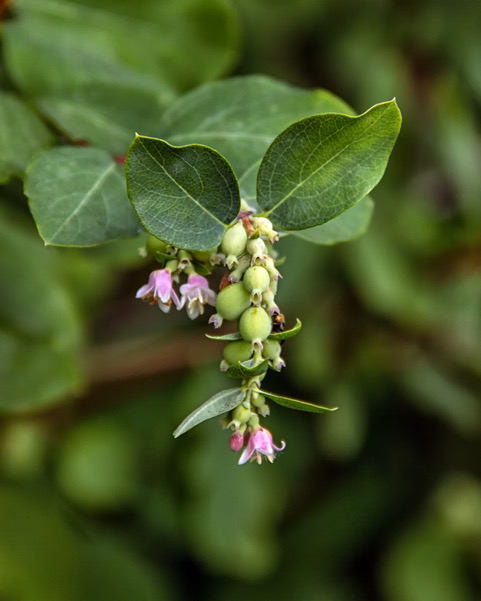
Charmed by the lovely white berries of Symphoricarpos albus, it took me years to notice the tiny pink blossoms that show up earlier. These were flowering alongside the path at Blakely Harbor.
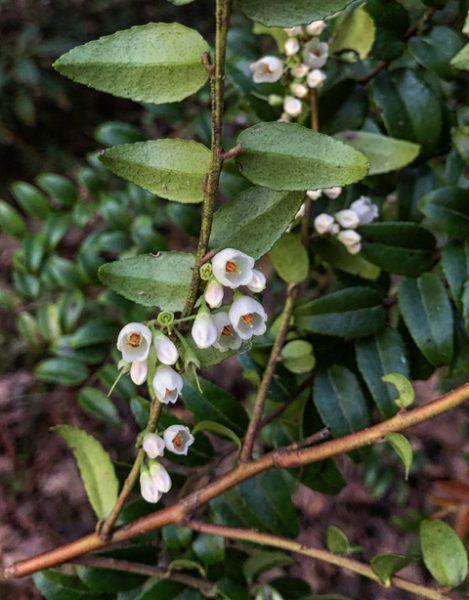
Equally inconspicuous are the dangling blossoms of Vaccinium ovatum—one of several species that go under the name of “huckleberry.” I had a friend twist and hold this branch to let me capture the interior of these tiny flowers. The Cascade huckleberry bears dark blue-black fruit, unlike the red fruit of the deciduous huckleberry [Vaccinium parvifolium].
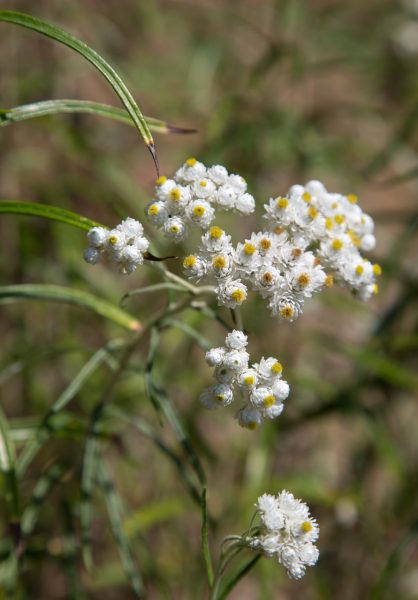
The dried blossoms of Anaphalis margaritacea retain their shape, making them popular in dried flower arrangements. That said, I’m not going to say on what protected property I found these; but keep an eye out for them—they resemble nothing else.
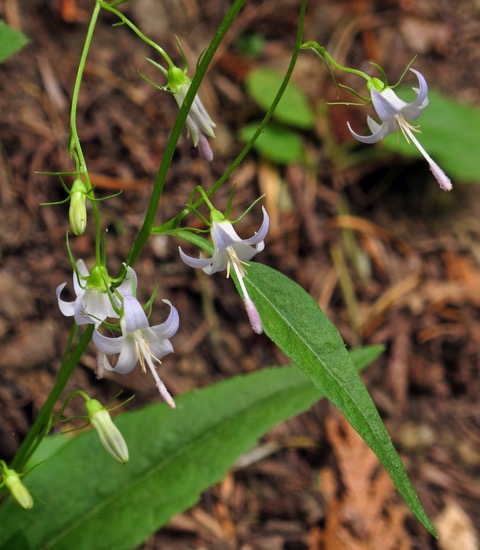
When back in 2010 I stumbled upon the lovely little trumpets of Campanula scouleri beside the Blakely Harbor to Fort Ward trail I was utterly charmed, and grieved when the trail was widened, wiping out this patch. I searched in vain for others ever since until this spring to my great relief I found another growing in the Grand Forest East.
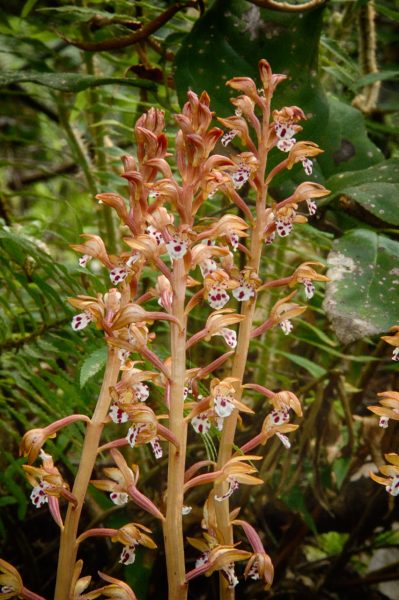
Another plant seldom seen here is the lovely little Corallorhiza maculata orchid.
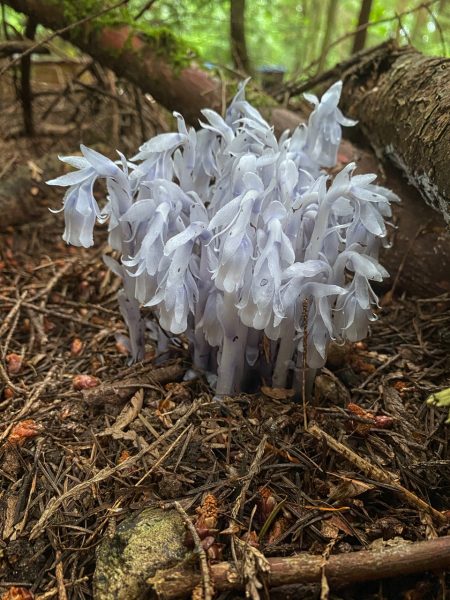
Also known as “ghost plant” and “corpse plant,” the eerie Monotropa uniflora is often mistaken for a fungus; but it has the rare property of utterly lacking chlorophyll, deriving its nourishment from tree roots. The blossoms emerge bent down like this, but gradually straighten upright as they develop.
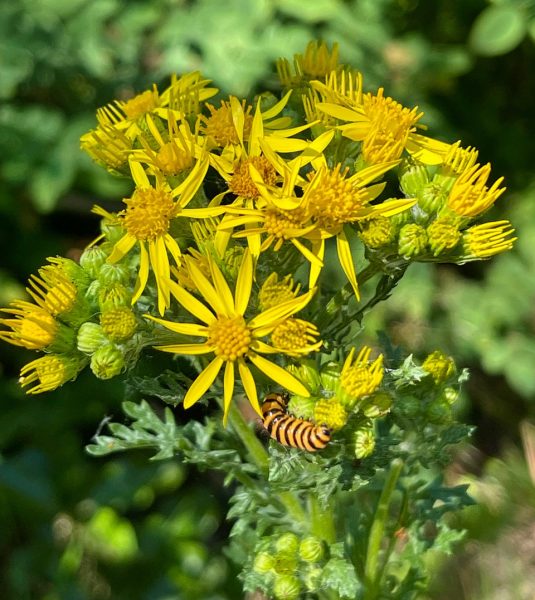
I’ve saved this attractive but dangerous villain for last. Senecio jacobaea also has the unflattering nicknames “stinking willie” and “staggerwort.” It’s toxic to animals and a star of the noxious weed control list. Spectacular cinnabar moths are imported into the areas where it blooms: the adult moths lay their eggs on the plants, and the brightly-striped caterpillars emerge to munch on its leaves—with only limited success. In some areas it is actually illegal to allow it to grow on your property and some recommend wearing gloves to yank it up and dispose of it.
















ABOUT PAUL BRIANS. Paul Brians does extensive volunteer photography for the Bainbridge Island Land Trust. He created the photo book Four Seasons on Bainbridge Island (2010), was principal photographer for Natural Bainbridge (2019)and contributed the majority of photographs in Dave and Alice Shorett’s Thirty Walks on Bainbridge (2020) published for the benefit of the Land Trust. He also took photos for some years for Bainbridge in Bloom. He has had six exhibitions of his prints on the Island and his pictures have appeared in many regional publications and on Bainbridge-related Web sites. He posts photos daily on Facebook and is an active member of the Bainbridge Island Photo Club.